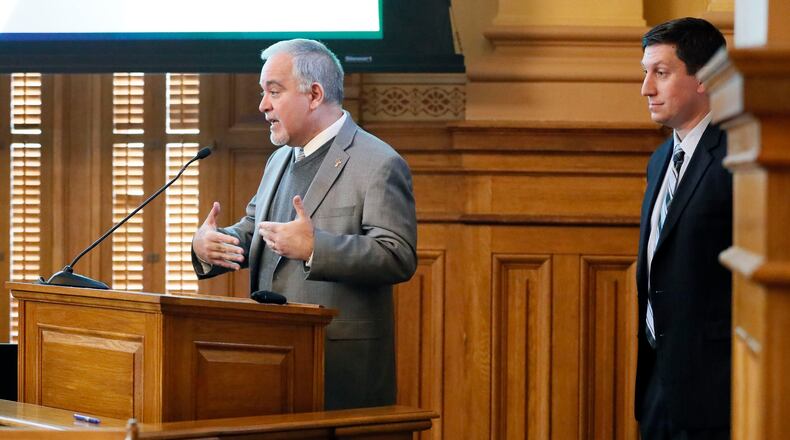In a region accustomed to jackhammers, cranes and other signs of growth, the latest student enrollment numbers may seem strange.
For the first time in at least a couple of decades, Georgia’s student population has flatlined.
It’s even happened in Gwinnett County, with its reputation for building new schools as regularly as a clock’s minute hand spins. The long-booming suburb — metro Atlanta’s master bedroom — added about 500 students, a tiny fraction of a total enrollment approaching 180,000. Other big metro counties went backward. Cobb was down about 200, while DeKalb and Fulton lost about 1,000 apiece.
State funding is tied to enrollment, and these districts have been accustomed to increases driven by more kids. The new enrollment trend could put pressure on local property taxes.
These aren’t one-time losses, either. An Atlanta Journal-Constitution analysis of state enrollment numbers shows Cobb, DeKalb and Fulton counties have sustained multiyear losses, DeKalb for the past three years and Cobb and Fulton for the past two.
Even in the city core, where new buildings are popping up like wild cubs in spring, enrollment has stalled. Atlanta Public Schools added about 200 students this school year and, like Gwinnett, has grown 2 percent since fall 2015.
Overall, state enrollment fell by more than 1,400, the first decline since at least 1994.
The historic flattening of the growth curve — half a decade ago, the state was adding 20,000 students a year — is driven by a drop in births. The number of babies entering the world through Georgia plummeted in the six years after the peak in 2007, according to numbers compiled by the Georgia Department of Education, which keeps track since births are a good predictor for kindergarten enrollment six years down the road. By 2013, the number of newborns per year had dropped by more than 13 percent to around 130,000, from a high of about 150,000. The annual birth report hasn’t changed much since.
Ted Beck, the finance chief for the state education department, has been telling lawmakers that's probably an effect of the Great Recession. Oddly, despite the stasis in enrollment, the state needs to add $113 million to the current budget for "growth" in schools.
That’s how much more the state funding formula says school districts are owed for enrollment changes even though they didn’t add students. That’s because the mix of students is becoming more costly: More are being diagnosed with disabilities and more are being identified as gifted. About one in three is in a higher cost category now, Beck said, up from nearly one in four two years ago.
“The number of students hasn’t grown but the … types of services these students are receiving has continued to push into more and more expensive categories,” he told members of a House of Representatives appropriations subcommittee Monday.
The education funding formula has the cost of such growth rising another $160 million next year.
Yet Beck noted that about a third of Georgia’s 180 school districts have yet to recover from the recession.
The additional funding will help them, but with the state and federal governments covering only about 60 percent of the cost of education, local taxpayers will have to shoulder the rest.
About the Author
Keep Reading
The Latest
Featured



